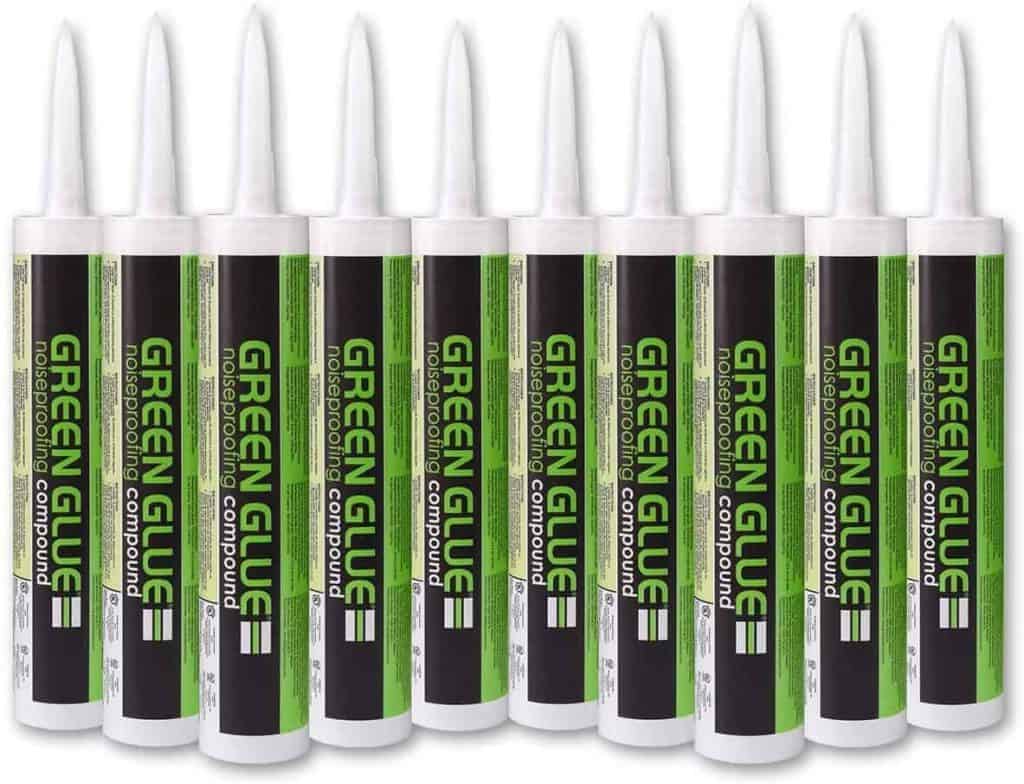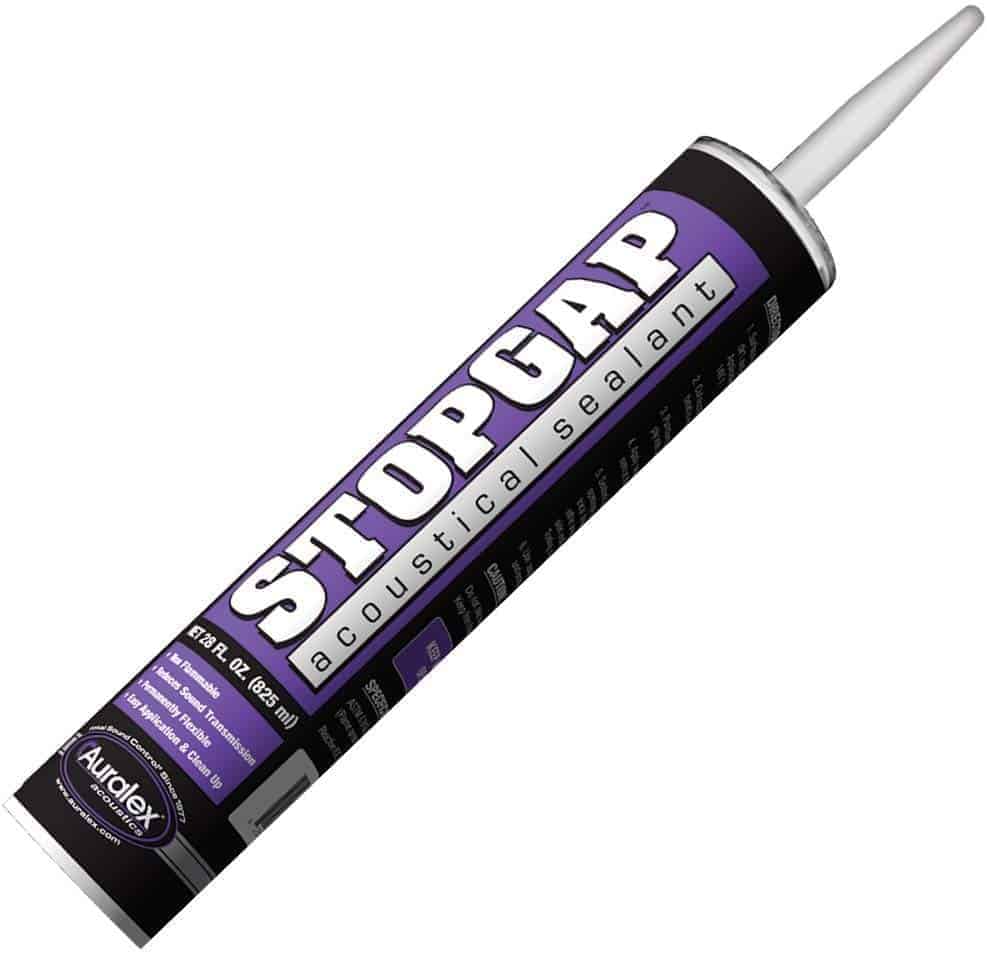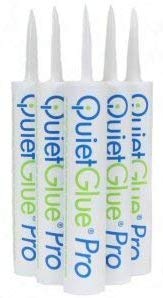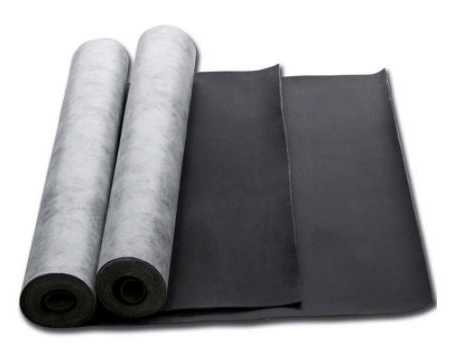In the world of soundproofing, there are a wealth of materials to choose from. Perhaps one of the most commonly used materials is Green Glue Noiseproofing Sealant. It’s so common because it’s extremely effective; however, it’s also quite pricey.
Given the price of Green Glue, some folks might be looking for an alternative to this soundproofing medium. However, are these alternatives as effective as Green Glue? Let's explore.

Before we discuss Green Glue alternatives, you may be wondering exactly what Green Glue is.
There are two different types of Green Glue: compound and sealant. According to the manufacture’s website:
Green Glue Noiseproofing Compound is a viscoelastic dampening compound that converts sound energy into a minute amount of heat.
Green Glue Company
In other words, the compound isolates soundwaves, thereby preventing them from passing through mediums, such as walls, floors, or a ceiling. The compound absorbs the vibrations that are created by soundwaves and turns the energy into heat.
It’s sandwiched between layers of building materials, typically drywall. For instance, you can apply a coating of Green Glue compound to the surface of one layer of drywall before applying an additional layer.
Also noted on Green Glue Company's webiste:
Green Glue Noiseproofing Sealant is a polymer that is designed to remain flexible over time and to prevent sound from flanking acoustical elements.
Green Glue Company
In layman’s terms, the sealant is designed to be used to seal up gaps around windows, doors, electrical outlets and fixtures, and the edges of walls, thus preventing the passage of soundwaves.
When used in conjunction with other soundproofing mediums, such as soundproof drywall and insulation, it is an effective soundproofing solution.
The sealant can be used to fill gaps that range from 5/8 to 1/4 of an inch. Once applied, the sealant expands, creating a barrier that blocks out unwanted noises.
While you may notice some level of sound reduction immediately after application, you won’t experience the full effects until about 30 days after Green Glue compound and sealant have been applied.
This is because the materials contain water, and it takes about 30 days for the water to fully evaporate. To achieve optimal performance, the space should be no cooler than 65 degrees F and no warmer than 85 degrees F, as both the compound and the sealant are temperature-sensitive.
While Green Glue is a highly effective soundproofing medium, it is only intended for interior applications. As mentioned, both the compound and the sealant are temperature-sensitive.
As such, if they are exposed to temperature extremes, the material will be rendered ineffective. Since the temperature of outdoor spaces cannot be controlled, Green Glue is not designed for exterior use.
Additionally, despite what the name implies, Green Glue is not a permanent adhesive material, and therefore, it should not be used as one. In other words, while the compound is designed to be applied between layers of building materials, it will not hold the materials together.
For example, you cannot apply Green Glue compound between two layers of drywall and expect the drywall to remain in place; you still need to use fasteners, such as nails, to secure the drywall in place.
Furthermore, Green Glue compound is designed to act as a constrained layer between layers of rigid building materials, such as sheetrock or hard flooring. As such, it should not be used between rugs, insulation, or other flexible or soft materials.
In regard to Green Glue sealant, it is designed to act as an acoustical barrier between gaps and joints. However, it should only be used in dry areas, as it cannot withstand moisture, so avoid using it to seal the gaps around pipes, plumbing fixtures, and in other areas that are exposed to moisture.
Sound Transmission Class or STC, is a rating that indicates how well a material blocks out sound; the higher the STC rating, the better the soundproofing capabilities. Green Glue itself is not assigned a specific STC rating. Instead, it enhances the STC rating of the material it is used in combination with.
To illustrate:
The STC rating of a wood 2x4 16-inch O/C wall constructed of 1/2-inch drywall on either side is 32.
If the wall were filled with fiberglass insulation batts with an R-13 rating and it were enclosed on each side with dual layers of 5/8-inch gypsum drywall that had Green Glue Noiseproofing Compound sandwiched between them, the STC rating would jump to 55. If a resilient channel were placed on one side of the wall, the STC would reach 62.
As you can see, Green Glue can certainly help to increase STC ratings, thereby reducing noise transmission and improving soundproofing capabilities.
While Green Glue compound and sealant are both extremely effective soundproofing materials, as noted, the price can be a bit costly. If you’re looking for something that’s more budget-friendly yet offers similar results, consider the following products as Green Glue alternatives.

A viscoelastic sealant similar to Green Glue sealant, this product is designed to reduce the transfer of soundwaves through gaps around walls, windows, and electrical fixtures. It’s water-based and retains its elasticity five times longer than similar soundproofing sealants once it has cured.
Applying the sealant is relatively easy, as it does not create run-off; however, until it completely cures, expect to smell a slight odor. Once dried, the surface will be white and durable, and it can be painted to conceal the color.

Like Green Glue Noiseproofing Compound, QuietGlue Pro is also a viscoelastic compound that is designed to minimize the vibration of soundwaves. It’s a water-based, solvent-free material that has a low odor and low VOC level.
The compound can be purchased in 1- and 5-gallon tubs, as well as 28-ounce tubes. It can prevent noise transfer by as much as 90% and it can be applied to walls, ceilings, and floors. Application is easy and curing time is relatively short.

Mass Loaded Vinyl, or MLV, is a thick, heavy, yet malleable vinyl material that is impregnated with either barium sulfate or calcium carbonate.
Like Green Glue, MLV is a very commonly used soundproofing material, as it can be used in a variety of applications, including interior, exterior, and in damp locations.
With independent STC ratings of 20, 26, and 33 (the thicker and heavier the MLV, the higher the rating), it effectively eliminates a significant amount of unwanted noise, including medium- and high-range frequencies.
Additionally, there is no odor and it is easy to install.
While Green Glue is certainly a highly effective soundproofing material, it isn’t the only material that can be used to block out unwanted noises. Try using some of the above-mentioned alternatives if you’re attempting a soundproofing project.

Snoringsource.com is a participant in the Amazon Services LLC Associates Program, an affiliate advertising program designed to provide a means for website owners to earn advertising fees by advertising and linking to amazon(.com, .co.uk, .ca etc) and any other website that may be affiliated with Amazon Service LLC Associates Program.